How the NBA's New Collective Bargaining Agreement Impacts the Trail Blazers
Breaking down the new labor agreement's implications for Portland.
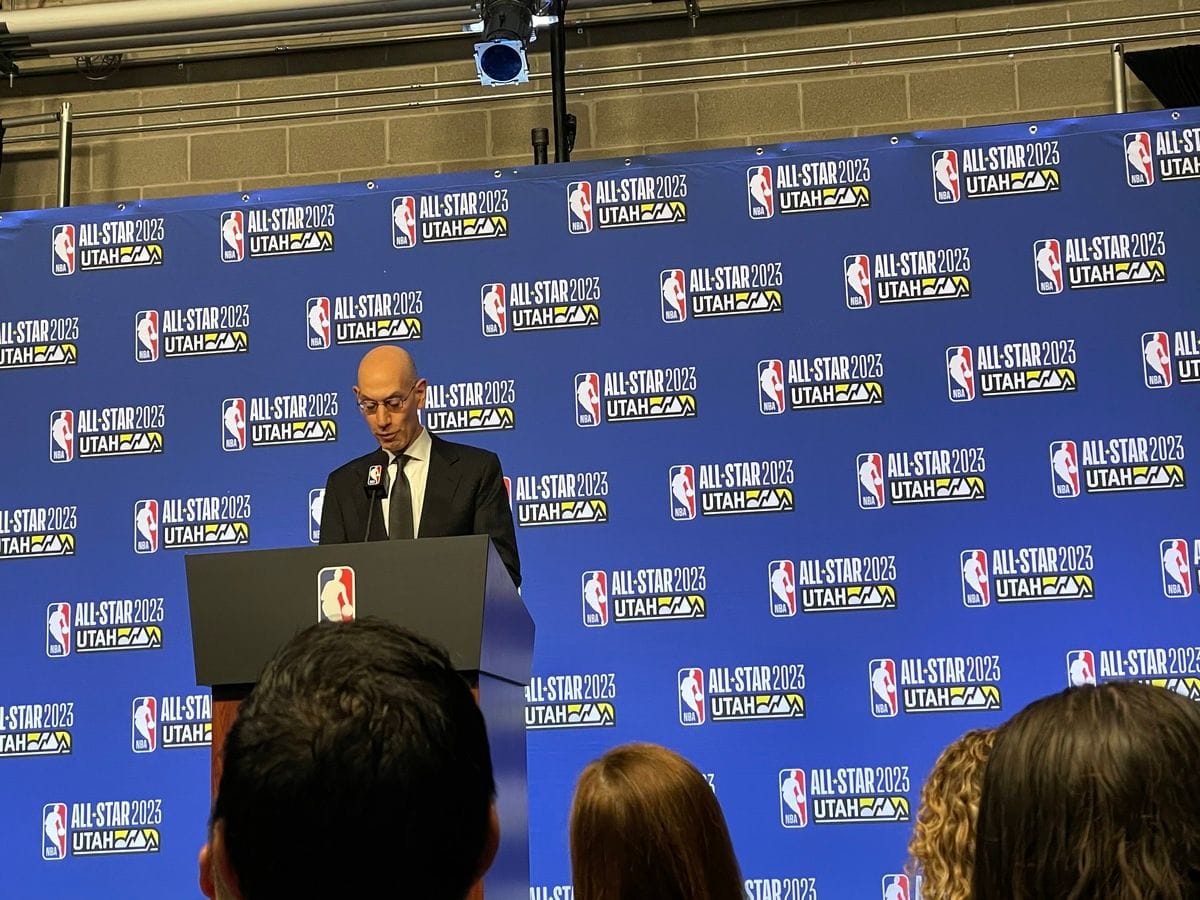
The NBA is headed for an offseason with big questions about what certain teams will look like. One of the questions the league will not be facing is whether fans should worry about a work stoppage this summer.
Last month, the NBA and players' union announced that they've tentatively agreed on a new collective bargaining agreement that will last through the end of the decade, ensuring another six to seven years of labor peace.
That part is great news for everybody. Most of you are old enough to remember the 2011 lockout. It sucked. No one wants another one. And there won't be one.
As far as the new CBA, there's some interesting stuff in there, and some pretty significant changes with wide-ranging impacts. The official 91-page term sheet outlining the changes has been sent out to teams, player agents and others, and I was able to get my hands on a copy. Everything below is straight from the source, not from the scattered reported details that have trickled out in the past month since the agreement was announced.
There's going to be a lot more to unpack in the coming weeks and months, but there are aspects of the new labor deal that will directly affect the Trail Blazers.
New extension rules
One of the new elements of the CBA is the ability for teams to pay veterans more money on contract extensions. The idea here is to help teams, especially in smaller markets, retain their players and decrease the chances they leave in free agency. Under the current rules, the most a player can receive in the first year of an extension is 120 percent of his current salary. The new CBA bumps that up to 140 percent.
The Blazers have a perfect case study here right now. They offered Jerami Grant a four-year, $112 million extension in January when he became eligible for it. He didn't sign it, and will be a free agent this summer. I have heard nothing at all to suggest he's unhappy in Portland or that both he and the Blazers don't expect to get a deal done quickly once free agency opens on June 30. I expect that to happen without much drama. But if they were able to offer him the higher number under the new CBA, that $112 million would have been roughly $130 million over four years. Maybe he would have signed for that, and it's one less thing to have to think about this summer.
The Blazers are a team that doesn't typically attract star-level free agents, so their best way to add high-level veteran talent is to trade for players and then extend them. Any new rule that makes it easier for them to do that is a good thing.
Another new rule aimed at allowing teams to keep their own stars is the elimination of the limit of two Designated Player Extensions (aka the "supermax"). Under the old rules, teams can only have two of those on their roster at a time, whether they sign them themselves or trade for them. Cleveland, for example, would have been prevented from giving Evan Mobley that extension once he's eligible for it since they already gave one to Darius Garland and traded for Donovan Mitchell while he was on one. Now, that's no longer an issue.
The Blazers only have one player on that type of extension right now, and that's Lillard. But if they trade for another star this summer like they want to, and that player either already has that extension or wants it, that won't prevent them from also signing a third one in the future, be it Shaedon Sharpe, Victor Wembanyama or whoever else.
This is all a ways out from coming into play, but there won't be a 2012 Thunder situation here where they couldn't pay James Harden because they'd already paid Kevin Durant and Russell Westbrook.
Negotiating with your own free agents
Speaking of Grant's situation, there's a common-sense change in here that would impact him if it happened one year later. When the new CBA goes into effect in July and going forward, teams will now be allowed to start negotiating with their own impending free agents the day after the last game of the Finals, rather than having to wait until June 30.
Last summer, the Blazers agreed to a four-year, $100 million deal with Anfernee Simons that was reported a few minutes after teams were "allowed" to start talking to players. Everyone knows they had already been talking and had agreed on the deal in the days and weeks leading up to this, but acknowledging this would have technically been against the rules, so we were all forced to pretend they began negotiations at 12:01 and had a deal three minutes later. (Simons is just the Blazers' latest example of this; it happens all the time across the league.)
We can all stop pretending now, at least when it comes to a team re-signing their own players. The old rules are still there for another team's players, and they're basically a test for teams not to get too sloppy, as the Bulls and Knicks did with Lonzo Ball and Jalen Brunson in recent years. You can understand why teams have concerns about other teams trying to recruit their free agents before the official signing period begins. But there's absolutely no reason why teams shouldn't be allowed to negotiate to keep their own guys before then, and they will be in future years.
No one is naive enough to think the Blazers and Grant's representatives haven't already started talking about a new deal, or that they won't have a pretty good idea of what it will look like by the time free agency opens. You're going to see a tweet from one of the news breakers very shortly into free agency with news of their agreement. It makes sense to drop the charade.
The "Joe Lacob/Steve Ballmer Rule"
In the 2011 CBA negotiations, which came in the wake of LeBron James, Dwyane Wade and Chris Bosh teaming up in Miami, small-market team owners pushed for rule changes that made it harder to build "superteams." These included harsher luxury-tax penalties, a smaller mid-level exception for tax teams and max extension rules that incentivized stars to stay with the teams that drafted them.
It didn't really work.
Stars move around more than ever now, it just happens through player-engineered trades rather than free agency. And the teams that do get the big stars are often able to supplement that top-end talent by getting higher-level role players to sign for the mid-level exception to chase rings, and have their pick of free agents that come available via buyout during the season.
The new CBA has taken steps to limit this, presumably at the urging of smaller-market owners.
The top-spending teams are now severely limited in the ways they can add talent. Teams with payrolls at least $17.5 million above the luxury tax line now can't use even the taxpayer mid-level exception, send out cash in trades, take back more money than they send out in a deal, trade first-round picks seven years out or sign players in the buyout market.
On the flip side, teams below the tax line have a 10 percent bigger mid-level exception to play with. It's projected to start at $12.2 million, up from $10.5 million last summer.
The Blazers are not going to be one of the teams on the upper extreme of the spending limits subject to the more stringent rules. Right now, that only applies to the Warriors and Clippers. But if Portland is going to be aggressive in trying to make improvements this summer, as Joe Cronin has said they're going to, they have a little more flexibility now.
Out of all the changes related to team-building, this one has been the most polarizing in the public reaction. You can understand why some teams don't feel they can compete with the spending power of Joe Lacob or Steve Ballmer. A similar thing is happening in baseball, with harsher luxury-tax penalties introduced in the last CBA to discourage new Mets owner Steve Cohen from blowing everyone else out of the water (which he's doing anyway). But other people in the league and industry I've talked to in the past week worry that the limitations of the second tax apron are just going to be used as an excuse for cheaper owners to keep their payrolls low.
Portland spent most of this season just a hair below the tax line and then shed more salary at the trade deadline. I've been given the sense that Blazers ownership is willing to go into the tax for a roster that's worth going into the tax for. This year's team obviously was not. The new CBA gives them more opportunities to add the kind of talent that will make it worth writing that check. Now it's up to Cronin to deliver on that.
More leverage for restricted free agents
Once upon a time, when a restricted free agent signed an offer sheet with another team, their old team had a full week to decide whether or not to match. That window was shortened to 72 hours in the 2011 CBA, which gave players more leverage but still resulted in shenanigans like then-Knicks GM Glen Grunwald physically hiding from Daryl Morey at Summer League to avoid being delivered a Rockets offer sheet for Jeremy Lin and thus starting the clock.
With the new CBA, the window to match has been shortened once again to 24 hours, which will force a player's current team to decide quickly.
In the past decade, we haven't seen many restricted free agents actually sign offer sheets with other teams. If the player is any good at all, most teams will just match to avoid losing them for nothing, and the team signing the offer sheet will have tied up their cap space for two days and not even get the player. The most notable recent one was Indiana signing Deandre Ayton to an offer sheet last summer, which Phoenix matched immediately. Maybe the shorter window to match will encourage teams to go after restricted free agents more regularly.
The other change in the restricted free-agency rules will be a 10 percent increase in the amount of the qualifying offer, but that won't go into effect until the summer of 2024, as qualifying offers for this summer are due on June 29, technically still under the current CBA.
The Blazers have two restricted free agents this summer in Matisse Thybulle and Cam Reddish. I'd expect one or both to get new deals worked out to stay in Portland rather than testing the market, just as Anfernee Simons did last summer. But the new rules could come into play in future years for Shaedon Sharpe, plus whoever they draft this year, if they're not extended. That's years out, though.
Another note: rookie-scale extensions can now be for five years even if they aren't max extensions. This could come into play in a couple years for Sharpe, who will be extension-eligible after the 2024-25 season.
Games-played minimum for awards
In an effort to combat the trend of star players sitting out marquee nationally-televised games, the new CBA has added a 65-game minimum for players to be eligible for end-of-season awards, including most individual honors and the All-NBA teams. It won't come into effect this season, but if it did, Lillard would be ineligible for All-NBA, having only played 58 games before being shut down for the season.
There is a formal grievance process now, if a player believes their team intentionally held them out of games to prevent them from being eligible for an award. And for these purposes, a player has to play at least 20 minutes in a game for it to be considered a game played—so no starting a player and pulling them after one possession.
It's impossible to predict the future and what injuries or other circumstances might come up, but Lillard has made it very clear that he's not a fan of so-called "load management" and will fight to play as many games as possible. So if he stays relatively healthy and continues to put up the kind of numbers he did this year, he'll be in good shape in future seasons come voting time.
Notably, Rookie of the Year is not one of the awards subject to the 65-game requirement, which makes sense given how inconsistent playing time can be for rookies not on rebuilding teams.
(As a side note: I don't love the decision to make All-NBA teams positionless, which seems to have been done mostly to get Morey to stop tweeting about Joel Embiid being snubbed for these honors.)
More two-way contracts
The NBA introduced two-way contracts with the last CBA in 2017. These deals pay more than the standard G League salary but less than the NBA minimum salary, with a limit of 50 games in the NBA before they have to be converted to regular NBA contracts. It's just another avenue for teams to find and develop young players and give them opportunities to earn real NBA minutes at very little cost.
Trendon Watford is the Blazers' most notable two-way success story. He spent the beginning of last season on a two-way contract after going undrafted, and showed enough to earn a real NBA contract midway through the season. This year, he became a regular rotation player.
The new CBA ups the number of two-way contracts each team is allowed to sign, from two to three. Expect the Blazers to take full advantage of this, whether it's signing players who can contribute immediately or taking more fliers on high-upside projects like their two two-way players from this year, Ibou Badji and John Butler Jr.
More flexibility to sign second-round picks
Under the current rules, in order to sign a second-round pick to any contract above a two-year minimum deal, teams are required to either use cap space or part of the mid-level or biannual exceptions. Last summer, Portland signed their No. 57 overall pick, Jabari Walker, to a three-year deal using part of their mid-level exception, which meant less money they could offer another player (in this case Gary Payton II, who signed a three-year deal starting at a little less than the full mid-level, with enough left over to sign Walker).
That's going to change with the new CBA. The league has created a new cap exception for teams to sign second-round picks to three- or four-year deals without taking away their tools to sign other players. The Blazers appear to have found a viable rotation player in Walker late in the second round last year; if they have another hit this year, they'll be able to sign that player to a real contract without sacrificing their flexibility to improve the roster elsewhere. As it stands right now, the Blazers will have one pick in the second round of June's draft, Atlanta's No. 43 overall selection.
In-season tournament
This idea has been kicking around in some form or fashion since the mid-2000s, when Bill Simmons started pushing what he called the "Entertaining-as-Hell Tournament" in his ESPN column. Silver has been talking about it practically from the day he took over as commissioner in 2014, and it is now a reality, starting next season.
Here are the details:
- Two days of each week in the early part of the season will be designated for "group stage" tournament games that will also count in the regular standings. The groups will be determined via random drawing among the 15 teams in each conference—not by division.
- The top team from each of the six groups will advance to a single-elimination tournament in December, along with two "wild card" teams, and the final four teams will play at a neutral site. (The rumor is that neutral site will be Las Vegas, which would make sense given that the NBA already does Summer League and the G League Winter Showcase there.)
- When the initial season schedule is released in the summer, every team will have 80 games scheduled, leaving room for the tournament games. The two teams in the final will ultimately play 83 games. Every team not in the tournament will have their remaining two games scheduled later.
- The prize money for the winning team will be $500,000 per player. The losing team of the championship game will receive $200,000 per player, while semifinal teams receive $100,000 per player and the other four teams receive $50,000 per player.
The NBA has been beta-testing this concept in the G League for a few years, with some games being classified as Showcase Cup games and a trophy being awarded at the Showcase in December. The WNBA also implemented a midseason tournament called the Commissioner's Cup within its normal schedule starting in 2021.
The idea is pretty polarizing among NBA fans. Some are open to the concept and like that teams not in title contention have another trophy they can compete for; others think it's a gimmick that no one was really asking for.
Whether or not it's a success will ultimately come down to how much the players care about it. From what I can tell, the Commissioner's Cup has gone over well with WNBA players and fans, but that league is in a different position than the NBA is. Money is also a factor here. The WNBA awards the winning team $30,000 per player, which is a big deal given that even the highest-paid players in the league only earn a max salary of around $250,000 and most players make a lot less than that. The extra check is a real incentive to care.
In the NBA, even the league minimum is significantly higher than that. To rookies and young players on minimum deals, $500,000 is meaningful. But for someone making what, say, Damian Lillard is making, an extra half-million not going to make or break them. I can't imagine LeBron getting up for a tournament that didn't exist for his first two decades in the league. He doesn't need the money and wants to save his body and energy for the regular playoffs.
There will probably be some pressure behind the scenes from the league office to the biggest stars to act like the tournament is important to help them sell it. Some will go along with it more than others. Maybe 10 years from now, it will be ingrained among fans and players as a part of the league and earn more meaning. Right now, it feels like something younger players and less-experienced teams might get up for and veteran stars will probably roll their eyes at.
This year's Blazers are exactly the kind of team that would have done well in the tournament, given their hot start to the year. The Jazz are another team that was winning a lot of games in November and December before coming back down to earth. If those teams' fans care enough about it, it'll be cool for them to say they got something out of the season even though no one thought they had a real shot at winning the title.
Three years ago, when the idea first started being seriously talked about at the league level, I wrote a story for Bleacher Report asking some European players, who have played in leagues with similar multi-trophy structures overseas, whether they think it will work in the NBA. Reaction was mixed, but the general feeling was that fans in Europe are more open to the idea than Americans would be, because the dominant sport everywhere else in the world is soccer, and most of those teams play in multiple leagues with multiple cups. Sports fans there are used to it, while it's a mostly foreign concept to fans here.
"Every cup means something [in Europe]," Evan Fournier told me at the time. "If you win the Euroleague championship, that's the biggest thing. Then there's the French cup and the Copa del Rey. That means something to the fans in those countries. But the NBA is all about winning the championship. You want a ring. If they create a second tournament, nobody cares. Period."
It's not a coincidence that the midseason tournament is being introduced right before the NBA's media-rights deal is up in the summer of 2025. Presumably, either ESPN or TNT will get the rights for the first two years, but don't be surprised if the league tries to sell it as a separate property to one of the streaming platforms like Apple or Amazon as part of the next deal. That's the real reason Silver wanted this so badly. Even if the $500,000 prize money doesn't move the needle for most players, more money in the TV deal means more money for everyone.
We'll see how it plays out and whether it does well with fans. It's above my pay grade to decide if it will be a success. I'm skeptical but open to being wrong.
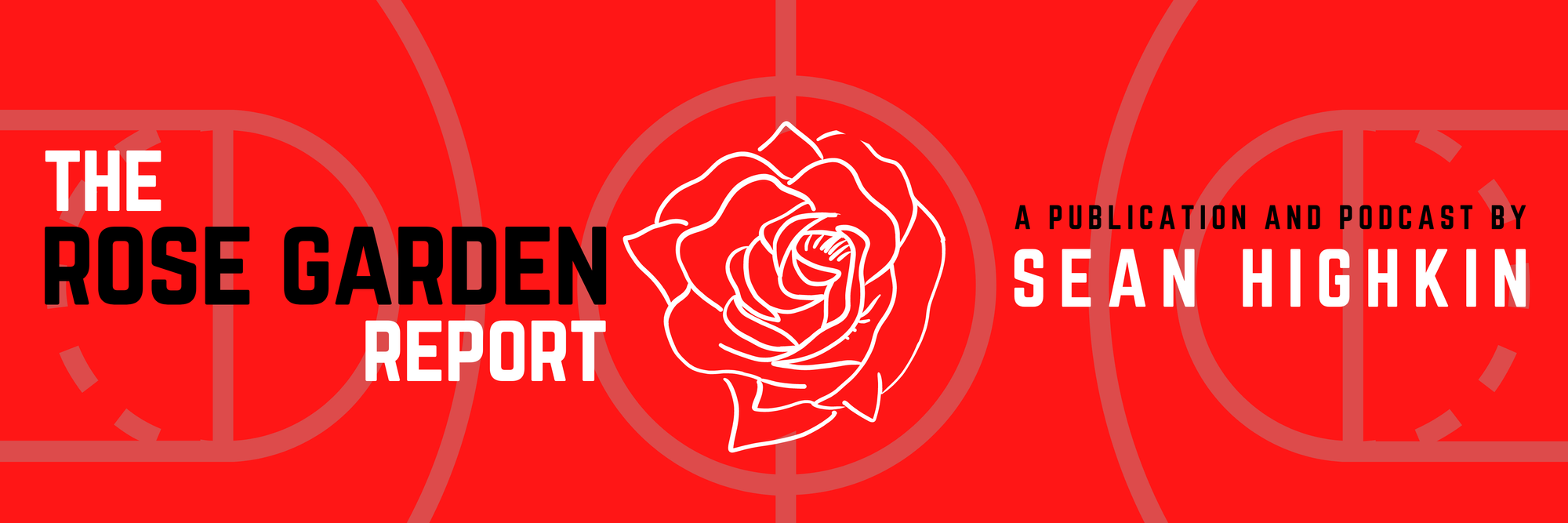
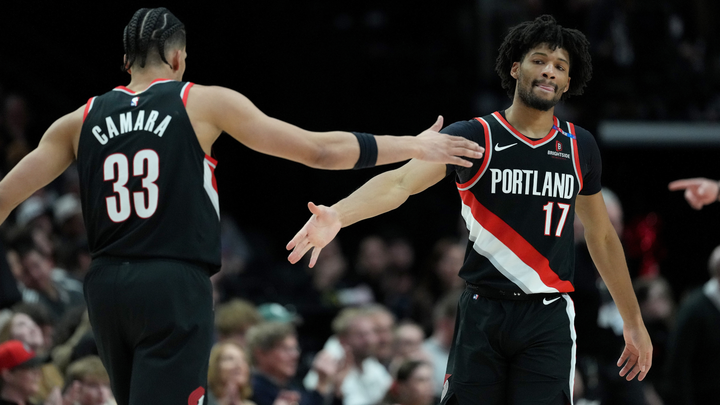
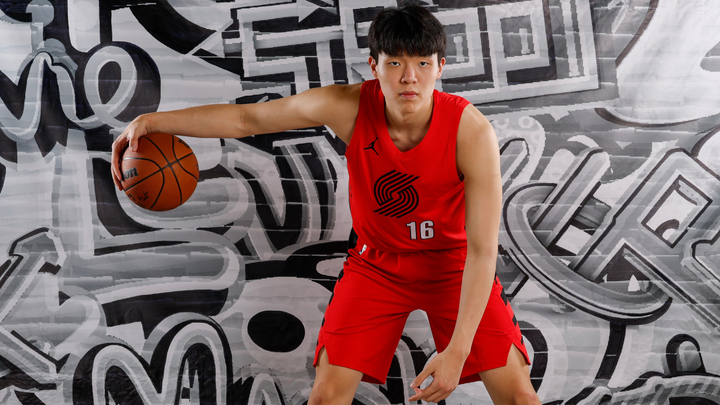
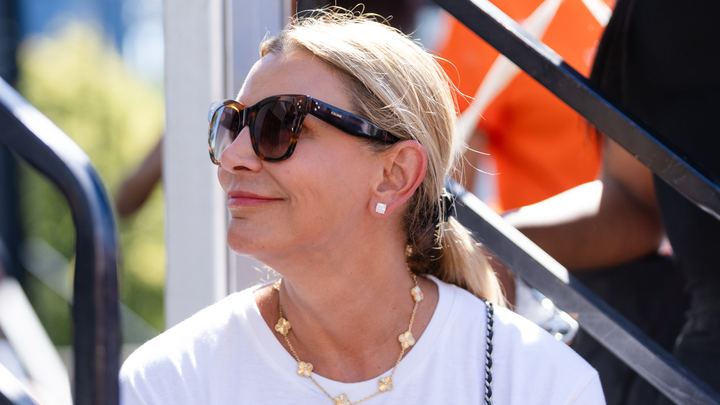
Comments ()